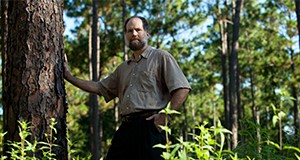
SMART Objectives assist educators and program planners in developing strong objectives that are Specific, Measurable, Achievable, Relevant and Time-bound. This 3-page fact sheet was written by David C. Diehl and Sebastian Galindo-Gonzalez. Published by the UF Department of Family Youth and Community Sciences, June 2012 and revised September 2015.
http://edis.ifas.ufl.edu/fy1327
Author: dihagan
Hurricane Preparation: Evacuating Your Home
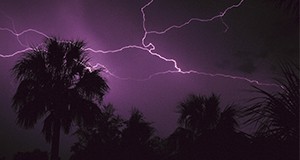
Every year Floridians are faced with the possibility of hurricanes. Hurricanes have had devastating effects on many communities in Florida, and every year the possibility exists that communities will be hit by hurricanes during the summer and fall months. During the months of potential hurricanes, it is important to plan for the worst and hope that it never happens. For example, you and your family may be asked to leave your home due to some emergency conditions in your community. Have a plan for a possible evacuation and be prepared to evacuate. This 3-page fact sheet lists fifteen things to keep in mind. Written by Elizabeth Bolton and Muthusami Kumaran and published by the Department of Family, Youth and Community Sciences, May 2015.
http://edis.ifas.ufl.edu/fy747
How to Perform a Fetotomy in Cattle: An Illustrated Guide
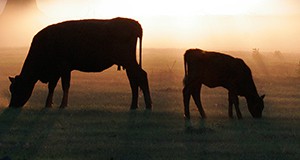 To perform a fetotomy means to dissect (to cut apart) a dead fetus in utero. Fetotomy is applicable particularly to cows because of the size of the uterus and the opportunity to introduce instruments to the full depth of the fetus. Fetotomy is an obstetric procedure that should only be performed by a trained veterinarian or under a trained veterinarian’s supervision. This 4-page fact sheet lists the circumstances when a fetotomy can be performed to save the life of the dam, the tools needed, fetotome preparation, the sequence of cuts for anterior presentation, and final comments. Written by Myriam Jimenez, Carlos Risco, and Klibs N. Galvão, and published by the UF Department of Veterinary Medicine-Large Animal Clinical Sciences, August 2015.
To perform a fetotomy means to dissect (to cut apart) a dead fetus in utero. Fetotomy is applicable particularly to cows because of the size of the uterus and the opportunity to introduce instruments to the full depth of the fetus. Fetotomy is an obstetric procedure that should only be performed by a trained veterinarian or under a trained veterinarian’s supervision. This 4-page fact sheet lists the circumstances when a fetotomy can be performed to save the life of the dam, the tools needed, fetotome preparation, the sequence of cuts for anterior presentation, and final comments. Written by Myriam Jimenez, Carlos Risco, and Klibs N. Galvão, and published by the UF Department of Veterinary Medicine-Large Animal Clinical Sciences, August 2015.
http://edis.ifas.ufl.edu/vm224
What is 4R nutrient stewardship?
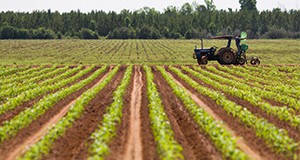
A new and innovative approach to Best Management Practices for fertilizer application known as 4R nutrient stewardship is available, to ensure the environmental, social, and economical sustainability of commercial crop production. This 3-page fact sheet focuses on the basic concepts of the 4R nutrient stewardship principles for commercial crop production. Written by Guodong Liu, Kelly Morgan, Yuncong Li, Lincoln Zotarelli, James DeValerio, and Qingren Wang, and published by the UF Department of Horticultural Sciences, July 2015.
http://edis.ifas.ufl.edu/hs1264
HOT TOPIC: Oriental Fruit Fly
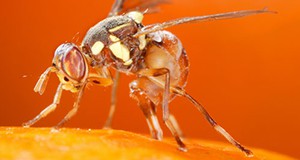
On Tuesday September 15th 2015, Florida Commissioner of Agriculture Adam H. Putnam declared a state of agricultural emergency due to the oriental fruit fly infestation in Miami-Dade County. The oriental fruit fly is considered one of the most serious of the world’s fruit fly pests due to its potential economic harm. For general information on this destructive pest of fruit, see EENY-083: Oriental Fruit Fly, Bactrocera dorsalis (Hendel) (Insecta: Diptera: Tephritidae) an informative Featured Creatures fact sheet describing the species, its distribution, life history, hosts, damage, quarantine & management, and selected references. (Photo Credit: Scott Bauer, USDA)
Also see these useful sources for news and information on the emerging threat:
Economic Contributions of Agriculture, Natural Resources, and Food Industries in Florida in 2013
About 1.52 million people worked full- or part-time in Florida’s agriculture, natural resources and food industries in 2013– an 8.7 percent increase in jobs over 2012.
Recognizing the significant impact agriculture, natural resources, and related food industries have on the economy of Florida is essential to informed public policy. UF/IFAS researchers used the Implan regional economic modeling system to estimate economic multipliers for over 500 different industry sectors and evaluate their economic contributions in 2013. This 5-page executive summary was written by Alan W. Hodges, Mohammad Rahmani, and Thomas J. Stevens and published by the Department of Food and Resource Economics, September 2015. (UF/IFAS File photo)
http://edis.ifas.ufl.edu/fe969
Related Resources:
Press release: http://news.ifas.ufl.edu/2015/09/floridas-agriculture-related-employment-up-8-7-percent/
Full report: http://fred.ifas.ufl.edu/pdf/FE969-FullReport.pdf
Estimated Water Savings Potential of Florida-Friendly Landscaping™ Activities
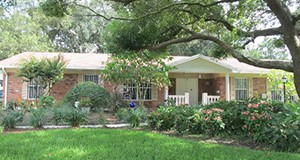
To help homeowners predict the impact of implementing some of the water conservation measures listed on Florida-Friendly Landscaping™ checklist, this 5-page fact sheet offers a table of estimated water savings. Homeowners can select activities which are the best fit for their landscape and can also see which have the most conservation potential. The water savings is compared to a baseline case of typical irrigation behavior. This 5-page fact sheet was written by Mackenzie Boyer and Michael Dukes, and published by the UF Department of Agricultural and Biological Engineering, August 2015. (Photo credit: Michael Gutierrez, UF/IFAS)
http://edis.ifas.ufl.edu/ae515
Tropical Storm ERIKA Information
 It appears that Florida is in the sights for a tropical storm or hurricane. Although it is still too early to tell what impact Erika will have on Florida communities, now is the time to review hurricane plans, begin preparing, and don’t be complacent. IFAS Extension has put together a variety of information to help in preparing individuals, families, agricultural producers, and communities for these type of natural events.
It appears that Florida is in the sights for a tropical storm or hurricane. Although it is still too early to tell what impact Erika will have on Florida communities, now is the time to review hurricane plans, begin preparing, and don’t be complacent. IFAS Extension has put together a variety of information to help in preparing individuals, families, agricultural producers, and communities for these type of natural events.
- Disaster Prep & Recovery (SolutionsforyourLife.ufl.edu)
- EDIS topics
For official weather information see the National Weather Service National Hurricane Center website
Basics of the National Flood Insurance Program
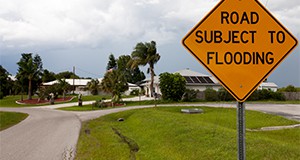
Established by Congress in 1968 because the private market stopped offering flood insurance, the NFIP provides federally backed flood insurance to property owners in participating communities. This 10-page fact sheet covers topics such as: why buy flood insurance, recent changes, flood zones and insurance rate maps, ways to reduce premiums, rate increases for pre-1974 structures, and actions communities can take to lower citizen premiums related to climate change and sea-level rise. Written by Thomas Ruppert and published by the UF Department of Sea Grant, July 2015.
http://edis.ifas.ufl.edu/sg139
Field Observations During the Eleventh Microwave Water and Energy Balance Experiment (MicroWEX-11) from April 25 through December 6, 2012
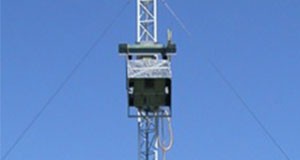 This new report from UF/IFAS researchers provides another set of observation data that can be used to develop better models for accurate prediction of weather and near-term climate. It describes the observations conducted during the MicroWEX-11, a season-long experiment incorporating active and passive microwave observations for bare soil, elephant grass, and sweet corn using a variety of sensors to understand land–atmosphere interactions and their effect on observed microwave signatures. These observations match that of satellite-based passive microwave radiometers and NASA’s recently launched Soil Moisture Active Passive (SMAP) mission. This 96-page report was written by Tara Bongiovanni, Pang-Wei Liu, Karthik Nagarajan, Daniel Preston, Patrick Rush, Tim H.M. van Emmerik, Robert Terwilleger, Alejandro Monsivais-Huertero, Jasmeet Judge, Susan Steele-Dunne, Roger De Roo, Ruzbeh Akbar, Ella Baar, Max Wallace, and Anthony England and published by the UF Department of Agricultural and Biological Engineering, July 2015.
This new report from UF/IFAS researchers provides another set of observation data that can be used to develop better models for accurate prediction of weather and near-term climate. It describes the observations conducted during the MicroWEX-11, a season-long experiment incorporating active and passive microwave observations for bare soil, elephant grass, and sweet corn using a variety of sensors to understand land–atmosphere interactions and their effect on observed microwave signatures. These observations match that of satellite-based passive microwave radiometers and NASA’s recently launched Soil Moisture Active Passive (SMAP) mission. This 96-page report was written by Tara Bongiovanni, Pang-Wei Liu, Karthik Nagarajan, Daniel Preston, Patrick Rush, Tim H.M. van Emmerik, Robert Terwilleger, Alejandro Monsivais-Huertero, Jasmeet Judge, Susan Steele-Dunne, Roger De Roo, Ruzbeh Akbar, Ella Baar, Max Wallace, and Anthony England and published by the UF Department of Agricultural and Biological Engineering, July 2015.
http://edis.ifas.ufl.edu/ae514
Using Airlifts to Collect and Concentrate Copepod Nauplii
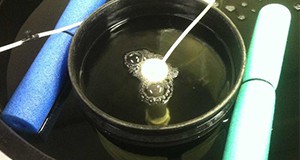
Airlifts are simple and inexpensive and not new to aquaculture. The buoyancy of rising bubbles within a pipe or tube generates an upward flow of water that are often used as part of water treatment design in recirculating aquaculture systems, but can also be used to collect and concentrate live food organisms fed to marine fish larvae. Airlifts are more gentle and efficient than sieving. This 3-page fact sheet provides protocols and designs for harvesting and feeding copepod nauplii to marine fish larvae, but these methods can be adapted for use with many live feed organisms. Written by Eric Cassiano, Matthew DiMaggio, Cortney Ohs, and John Marcellus, and published by the UF Department of Fisheries and Aquatic Sciences, May 2015. (Photo credit: Jason S. Broach)
http://edis.ifas.ufl.edu/fa188
Seguridad Alimentaria: Crucigrama de alimentos do alto riesgo
 Algunos alimentos pueden causar más enfermedades alimentarias que otros. La leche ó jugos no pasteurizados no son seguros para consumir. Alimentos que no han sido cocinados, como lo son los huevos crudos ó a medio cocinar son particularmente riesgosos.
Algunos alimentos pueden causar más enfermedades alimentarias que otros. La leche ó jugos no pasteurizados no son seguros para consumir. Alimentos que no han sido cocinados, como lo son los huevos crudos ó a medio cocinar son particularmente riesgosos.
This 2-page fact sheet is the Spanish language version of Food Safety: High-Risk Foods Crossword. Written by Jennifer Hillan and Linda B. Bobroff, and published by the UF Department of Family Youth and Community Sciences, June 2015. (Photo Credit: Catherine Yeulet/iStock/Thinkstock)
http://edis.ifas.ufl.edu/fy1170
Contaminantes en el Medio Ambiente Urbano: Los Perfluoroalquilos
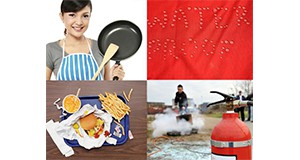 Los perfluoroalquilos–los perfluorocarbonos (PFC) o, en inglés, perfluoroalkyl substances (PFASs)–son los productos químicos artificiales más comunes y persistentes en el planeta. Algunos de los productos más comunes que contienen perfluoroalquilos son sartenes de teflón, utensilios de cocina antiadherente, chaquetas impermeables (como Gore-Tex), espumas de extinción de incendios, envases de alimentos, alfombras y telas para muebles. Los perfluoroalquilos poseen un largo tiempo de residencia en el medio ambiente, lo que significa que los perfluoroalquilos pueden acumularse en los organismos en niveles que causan efectos nocivos.
Los perfluoroalquilos–los perfluorocarbonos (PFC) o, en inglés, perfluoroalkyl substances (PFASs)–son los productos químicos artificiales más comunes y persistentes en el planeta. Algunos de los productos más comunes que contienen perfluoroalquilos son sartenes de teflón, utensilios de cocina antiadherente, chaquetas impermeables (como Gore-Tex), espumas de extinción de incendios, envases de alimentos, alfombras y telas para muebles. Los perfluoroalquilos poseen un largo tiempo de residencia en el medio ambiente, lo que significa que los perfluoroalquilos pueden acumularse en los organismos en niveles que causan efectos nocivos.
This 6-page fact sheet is the Spanish language version of Contaminants in the Urban Environment: Perfluoroalkyl Substances, written by Ignacio A. Rodriguez-Jorquera and Gurpal S. Toor, and published by the UF Department of Soil and Water Science, June 2015.
http://edis.ifas.ufl.edu/ss644
Feature image credit: iStock/Thinkstock.com (non-stick pan, waterproof fabric, and fire fighting foam)/Digital Vision/Thinkstock.com (fast food)
Phytophthora Identification and Sampling in Citrus Nurseries
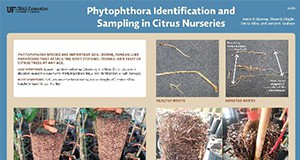
Phytophthora species are important soil-borne, fungus-like pathogens that attack the root systems, trunk, and fruit of citrus trees at any age. The front of this identification sheet includes images of healthy and infested roots and descriptions of leaf and root symptoms. The back lists sampling procedures: soil collection, soil testing, and diagnosing phytophthora. Written by Jamie D. Burrow, Diane B. Bright, Tim D. Riley, and James H. Graham, and published by the UF Department of Soil and Water Science, July 2015.
http://edis.ifas.ufl.edu/ss645
Tea Shot-Hole Borer Euwallacea fornicates (Eichhoff, 1868) (Insecta: Coleoptera: Curculionidae: Scolytinae)
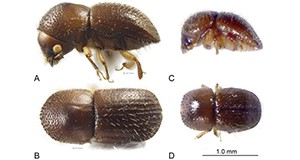
The tea shot-hole borer is an Asian ambrosia beetle introduced to Florida in the early 2000s. In Florida it does not have any known economic impact, but it is a serious pest of tea around the world and is one of the few ambrosia beetles that can infest healthy plants. The tea shot hole borer has a symbiotic relationships with the ambrosia fungus Fusarium ambrosium (Gadd & Loos), which is also a weak plant pathogen. This 4-page fact sheet includes diagnosis section with guidance for avoiding misidentification. Written by You Li, Andrea Lucky, and Jiri Hulcr, and published by the UF Department of Entomology and Nematology, June 2015.
http://edis.ifas.ufl.edu/in1090
A Sand Fly Lutzomyia longipalpis (Lutz and Neiva) (Insecta: Diptera: Psychodidae: Phlebotominae)
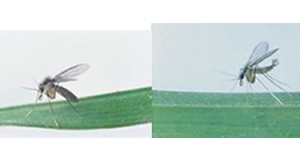 The true sand flies are densely covered with setae, have long slender legs, and broad and pointed wings that are held erect at rest. Several phlebotomine species are vectors of the protozoan parasites in the genus Leishmania, that are the causal agents of leishmaniasis. Visceral leishmaniais is the most severe form of the disease, and is fatal to the human or dog host if untreated. This 6-page fact sheet was written by Maria C. Carrasquilla and Phillip E. Kaufman, and published by the UF Department of Entomology and Nematology, June 2015. (Photo credit: Cristina Ferro, Instituto Nacional de Salud, Colombia
The true sand flies are densely covered with setae, have long slender legs, and broad and pointed wings that are held erect at rest. Several phlebotomine species are vectors of the protozoan parasites in the genus Leishmania, that are the causal agents of leishmaniasis. Visceral leishmaniais is the most severe form of the disease, and is fatal to the human or dog host if untreated. This 6-page fact sheet was written by Maria C. Carrasquilla and Phillip E. Kaufman, and published by the UF Department of Entomology and Nematology, June 2015. (Photo credit: Cristina Ferro, Instituto Nacional de Salud, Colombia
http://edis.ifas.ufl.edu/in1091
Vespiform Thrips Franklinothrips vespiformis Crawford (Insecta: Thysanoptera: Aeolothripidae)
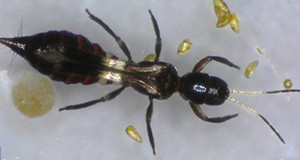
Franklinothrips vespiformis Crawford is a predatory thrips with a pantropical distribution. The distinctive red, humped-back larvae and fast-moving ant-like adults are predaceous on small arthropods. In addition to being easily mistaken for an ant, this beneficial thrips is unusual in that it constructs a silken cocoon within which it pupates. Males of this species are rare. This species is sold for use as a biological control agent in botanical gardens, zoos, interior landscapes, research greenhouses, nurseries with ornamental plants as well as outdoors in subtropical regions. This 4-page fact sheet was written by Runqian Mao, Yingfang Xiao, and Steven P. Arthurs, and published by the UF Department of Entomology and Nematology, March 2015. (Photo credit: Runqian Mao, UF/IFAS)
http://edis.ifas.ufl.edu/in1083
Black Scale Saissetia oleae (Olivier, 1791) (Insecta: Hemiptera: Coccoidea: Coccidae)
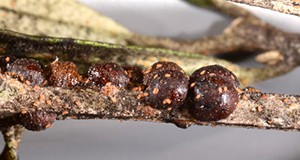 The black scale is an important pest of citrus and olive trees. Originally from South Africa, this scale is now distributed worldwide. In Florida, black scale is found on citrus, cultivated olive, avocado, and many popular landscape plants. It is likely that black scale, like many invasive pests, was imported to the United States on infested nursery plants. Based on their small size and the unique life history of scale insects, these insects are difficult to detect and control. This 4-page fact sheet was written by Morgan A. Byron, Jennifer L. Gillett-Kaufman, and Sandra A. Allan, and published by the UF Department of Entomology and Nematology, March 2015. (Photo credit: Lyle Buss, UF/IFAS)
The black scale is an important pest of citrus and olive trees. Originally from South Africa, this scale is now distributed worldwide. In Florida, black scale is found on citrus, cultivated olive, avocado, and many popular landscape plants. It is likely that black scale, like many invasive pests, was imported to the United States on infested nursery plants. Based on their small size and the unique life history of scale insects, these insects are difficult to detect and control. This 4-page fact sheet was written by Morgan A. Byron, Jennifer L. Gillett-Kaufman, and Sandra A. Allan, and published by the UF Department of Entomology and Nematology, March 2015. (Photo credit: Lyle Buss, UF/IFAS)
http://edis.ifas.ufl.edu/in1082
Black Turpentine Beetle, Dendroctonus terebrans (Olivier) (Insecta: Coleoptera: Curculionidae: Scolytinae)
 Black turpentine beetles bore into the inner bark of stressed or injured pines, where they breed and feed on phloem tissue. Adults are strongly attracted to volatile pine odors and readily breed in fresh stumps. In typical forests, infestations do not exhibit the rapid and devastating expansion characteristic of the closely related southern pine beetle, but in stands where stress conditions are frequent or persistent, black turpentine beetle can become a chronic pest and cause significant mortality over an extended period of time. Historically, black turpentine beetle has been a major pest of pines wounded or treated with herbicides in naval stores production. During the 1950s, black turpentine beetle damaged 37 million board feet of timber and contributed to the financial collapse of turpentine farms. This 5-page fact sheet was written by Albert E. Mayfield, John L. Foltz and Jiri Hulcr, and published by the UF Department of Entomology and Nematology, June 2015. (Photo credit Adam Black and Jiri Hulcr, UF/IFAS)
Black turpentine beetles bore into the inner bark of stressed or injured pines, where they breed and feed on phloem tissue. Adults are strongly attracted to volatile pine odors and readily breed in fresh stumps. In typical forests, infestations do not exhibit the rapid and devastating expansion characteristic of the closely related southern pine beetle, but in stands where stress conditions are frequent or persistent, black turpentine beetle can become a chronic pest and cause significant mortality over an extended period of time. Historically, black turpentine beetle has been a major pest of pines wounded or treated with herbicides in naval stores production. During the 1950s, black turpentine beetle damaged 37 million board feet of timber and contributed to the financial collapse of turpentine farms. This 5-page fact sheet was written by Albert E. Mayfield, John L. Foltz and Jiri Hulcr, and published by the UF Department of Entomology and Nematology, June 2015. (Photo credit Adam Black and Jiri Hulcr, UF/IFAS)
http://edis.ifas.ufl.edu/in636
An ambrosia beetle Xyleborus affinis Eichhoff, 1868 (Insecta: Coleoptera: Curculionidae: Scolytinae)
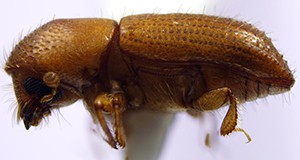 Xyleborus affinis is one of the most widespread and common ambrosia beetles in the world. It is also very common in Florida. Like other ambrosia beetles, it bores tunnels into the xylem of weakened, cut or injured trees and farms gardens of symbiotic fungus for food. Females lay eggs in the fungus-lined galleries and larvae feed exclusively on the fungi. Recent studies have shown that Xyleborus affinis can vector the fungus responsible for laurel wilt disease, which is lethal to numerous species of trees in the Lauraceae family. This 5-page fact sheet was written by Lanette Sobel, Andrea Lucky, and Jiri Hulcr, and published by the UF Department of Entomology and Nematology, June 2015. (Photo credit: Juri Hulcr, UF/IFAS)
Xyleborus affinis is one of the most widespread and common ambrosia beetles in the world. It is also very common in Florida. Like other ambrosia beetles, it bores tunnels into the xylem of weakened, cut or injured trees and farms gardens of symbiotic fungus for food. Females lay eggs in the fungus-lined galleries and larvae feed exclusively on the fungi. Recent studies have shown that Xyleborus affinis can vector the fungus responsible for laurel wilt disease, which is lethal to numerous species of trees in the Lauraceae family. This 5-page fact sheet was written by Lanette Sobel, Andrea Lucky, and Jiri Hulcr, and published by the UF Department of Entomology and Nematology, June 2015. (Photo credit: Juri Hulcr, UF/IFAS)
http://edis.ifas.ufl.edu/in1094
